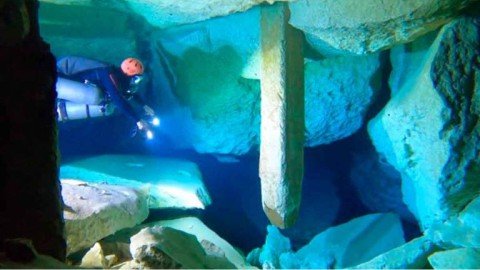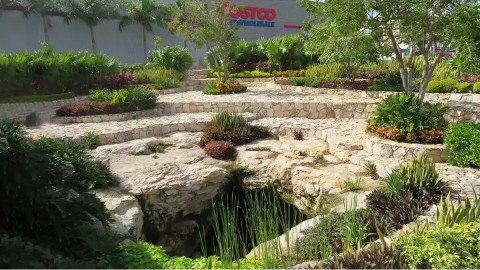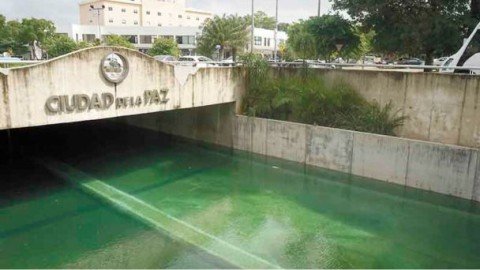The soil of Yucatan
Experiences of external developers and local solutions
Yucatán, the jewel of the peninsula located in southeastern Mexico, has experienced a boom in urban and tourism development in recent years. Its rich history, culture and natural beauty have attracted investors and developers from various parts of the country and the world. However, those who come to build in this region without a thorough knowledge of its geological and climatic particularities face a series of challenges that can affect the success and durability of their projects.
The challenge of limestone soil and water table
One of the main challenges that foreign developers encounter when building in the Yucatán is the type of karst soil that predominates on the peninsula. This soil, known as “Yucatan stone,” is extremely porous and is composed primarily of limestone. While this gives the region a unique natural beauty, it also presents challenges in terms of foundations and subway construction.
The limestone soil is susceptible to erosion, which can affect the stability of structures if proper precautions are not taken during construction. Developers unfamiliar with this type of soil may underestimate its fragility and, as a result, face settlement problems and damage to buildings over time.
In addition, the presence of a large water table is another distinctive feature of the soil in Yucatan. Due to the porosity of the limestone soil, water seeps easily and accumulates in large quantities in the subsoil. This represents a significant problem when constructing basements or buildings with deep foundations, as water can seep into subway spaces and compromise the structural integrity of the buildings.


Stormwater drainage and urban infrastructure
Another major challenge that developers outside of Yucatan face is urban infrastructure and stormwater management. Unlike other states, where drainage systems carry water directly to the roadway, in Yucatan, a different approach is required due to the karst nature of the terrain.
The region has a system of subway rivers and cenotes, which are natural water sinkholes. These subway water bodies are of vital importance for aquifer recharge, but can also pose a challenge to urban development. Traditional drains and sewers are not sufficient to efficiently manage heavy rainfall, as water quickly seeps into the ground, causing flooding and drainage problems.
Developers unfamiliar with these peculiarities may face difficulties in designing effective drainage systems that prevent flooding and preserve the integrity of buildings.


High temperatures and rainy seasons
Another important challenge that external developers should have in mind is the climate of Yucatan. The peninsula experiences high temperatures for much of the year, which can affect the energy efficiency of buildings and require specific design solutions to ensure a comfortable environment for its inhabitants.
High temperatures can also affect the behavior of building materials and increase the costs of cooling interior spaces. Developers should consider design strategies that promote natural ventilation, the use of appropriate materials, and the incorporation of sustainable technologies to reduce the environmental footprint and ensure the well-being of occupants.
An addition, Yucatan is prone to strong rainy seasons, especially during the hurricane season. These torrential rains can test the resistance of structures and drainage systems, so it is essential to take these factors into account during planning and construction.


Local experience as a solution
In the face of these challenges, having local experience and knowledge is of vital importance to ensure the success of projects in Yucatan. Companies like Alher Sem, with more than 16 years of experience in the region, have demonstrated their ability to effectively address soil and climate challenges in their architectural projects.
Alher Sem has a team of experts who understand the unique nature of limestone soil and the appropriate foundation solutions to address the water table. Through specialized engineering and construction techniques, they have been able to develop resistant and sustainable buildings that adapt to the particular conditions of Yucatan.
In addition, their experience in the design of storm drainage systems has proven to be fundamental in preventing flooding and mitigating the risks associated with heavy rains.


Building in Yucatan is an exciting and rewarding challenge, but it requires a careful approach and a thorough understanding of the region’s unique geological and climatic conditions. Developers from outside the peninsula must be prepared to face the challenges of the limestone soil and water table, as well as to adapt to stormwater management and heavy temperatures and rainy seasons.
Having local expertise, such as that offered by Alher Sem, can make the difference between success and failure of an architectural project in Yucatan. With their specialized knowledge and approach, it is possible to create sustainable and resistant buildings that enrich the natural and cultural beauty of this unique region in Mexico. The search for innovative and sustainable solutions that adapt to the specific environment of Yucatan will be the key to a successful and environmentally friendly urban development.
Comments
We are interested in your opinion, please leave us a comment